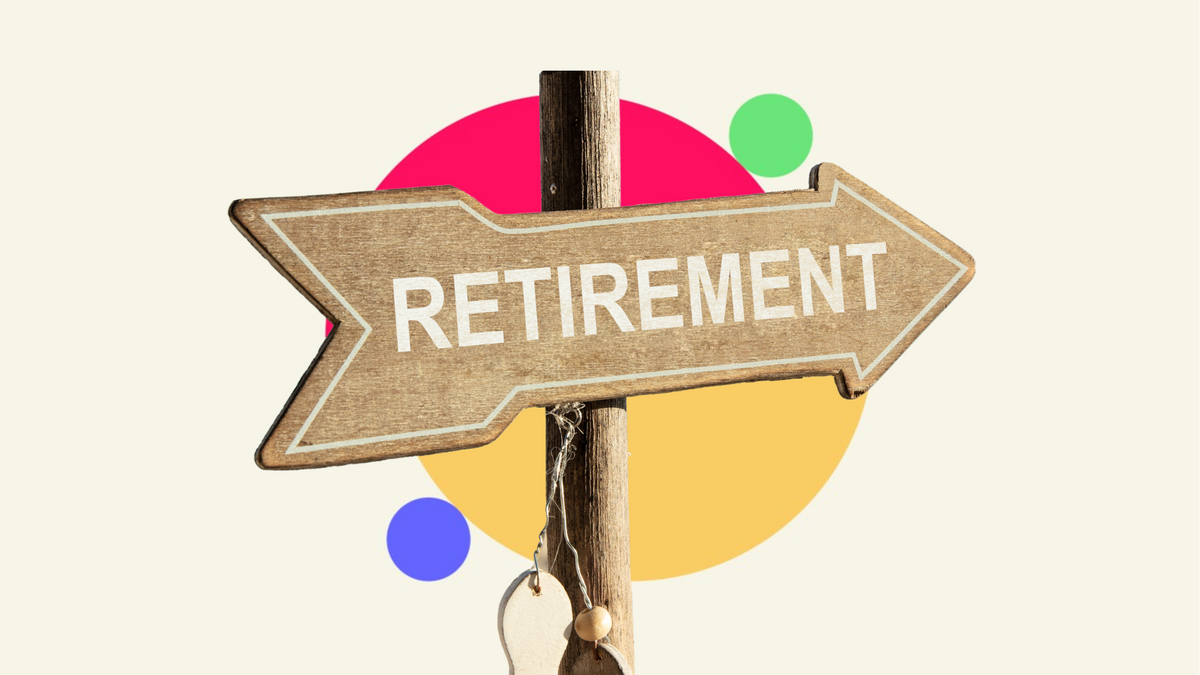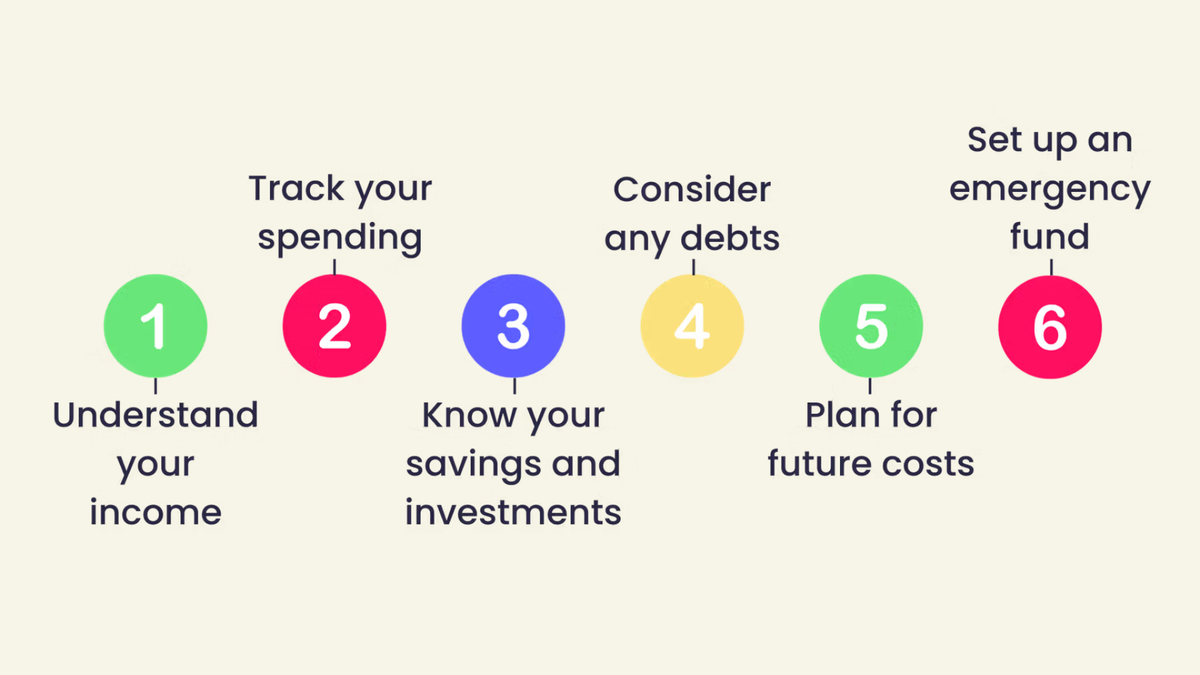Smart Ways to Invest After Retirement (And Avoid Running Out of Money)
By Boring Money
30 April, 2025
Congratulations on reaching retirement! Now you've entered this new phase of life, you might be considering how to make your savings work harder for you. Investing during retirement might seem complex, but with a clear understanding of your finances and a plan in place, it can be a great way to ensure your money continues to support you throughout your post-work years.

1. Assess your financial situation
The first and most important step in investing after retirement is understanding where you stand financially. It might not make sense to invest if you don’t have a lot of extra money to spare. On the other hand, if you’re in a position to do so, investing can help to make your money go further.
If you’re retired and thinking about whether or not it’s a good idea for you to invest, consider the following:

Understand your income
Make a list of all the money you receive on a regular basis – ideally monthly. This can include things like personal or workplace pensions, your State Pension, and any other fixed payments such as rental income. This helps you see how much money you have consistently coming in.
Track your spending
Note down your monthly expenses, like utility bills, groceries, your mobile phone contract and any healthcare costs. This helps you understand where your money goes each month. It’s essential to be as detailed as possible to get a comprehensive picture of how much money you’re spending.
If, after you’ve covered all your expenses, you have a significant amount left over, you may feel more comfortable investing this extra cash than someone whose spending is eating up almost all of the income they’ve got coming in.
Know your savings and investments
Add up the total value of any savings, investments and any valuable items you own, such as property, vehicles and expensive jewellery. Collectively these items are referred to as your ‘estate’. The value of your estate shows you how much money you own and this can influence your decision on whether it’s sensible for you to invest and how to go about it.
For example, someone with a larger estate (e.g. substantial savings) may feel more comfortable investing as they have greater financial security to fall back on than someone with a smaller estate (e.g. little or no savings).
Consider any debts
Think about any money you owe, such as for loans or credit card debts. This helps you see what you need to pay off. It’s possible that you may have a large estate or a comfortable income stream but still have a lot of debt to pay off.
Regardless of your financial situation, paying off debt should always be a priority. Your goal should be to get on top of it before you start investing or invest any more.
Plan for future costs
Consider any significant expenses coming up, like home repairs, healthcare costs or a big holiday you’ve planned with the family. This helps you to see what your spending is going to be in the future so you can plan accordingly. For example, if you’re planning on spending a large amount of money on renovating your property in the near future, it may make more sense to save up your income for this than to invest it and expose it to the potential for loss on the stock market.
Set up an emergency fund
Finally, make sure you set aside some money for unexpected expenses, like sudden medical bills or urgent home repairs. This is your emergency fund and is crucial for maintaining your financial security. It’s generally recommended that your emergency fund equates to between 3-6 months’ worth of your income. Like paying off debt, ensuring you have an emergency fund in place should be a priority before you invest.
By getting a thorough understanding of: how much you own; how much money you receive on a regular basis; how much you spend on a monthly basis; and other factors such as outstanding debt and any upcoming costs, you will have a clear sense of your financial situation. This will help you to decide how much you can comfortably use for investing without risking your financial security. Our beginner's guide to budgeting may be a helpful starting point for building your emergency fund.
2. Set clear investment goals
Once you've evaluated your finances and decided you’re in a secure enough position to invest, it’s time to think about what you want to achieve with your investments. Are you aiming to generate a steady income to supplement existing income streams like your pensions? Or are you looking for long-term growth to generate a bigger pot of savings accumulated over a longer period of time?
A key component in identifying your investment goals is to assess your preferred timeframe. If you want to invest for a steady income, your timeframe is short – you want that money coming in as soon as possible. If you want to invest for growth, your timeframe is longer – you don’t mind waiting for your money to grow over time.
These timeframes can also help you to understand the level of risk you feel comfortable with. Someone who wants a reliable income from their investments as soon as possible will probably sleep better at night knowing their investments aren’t likely to fall in value at short notice. On the other hand, someone who’s okay with sitting tight for a while and letting their investments grow probably won’t be as unnerved by a sudden dip if they know they’ve got plenty of time to regain lost ground.
Identifying your investing goals will help you to choose the right investment options that align with what you want to achieve. It’s essential to make sure you don’t invest in the wrong products for you or use the wrong strategies which could end up with you losing money when you can’t afford to.
3. Explore low risk investment options
For the majority of retired people, even those who are investing for growth should still consider preserving their wealth. After all, you’ve spent a lifetime saving up for retirement, you don’t want to risk losing it all!
The easiest way to safeguard your money while investing is to incorporate low risk investments into your portfolio. These can include things like:
Bonds (which pay out interest in regular instalments)
Investment trusts (investment companies which pay out dividends in regular instalments)
Low risk ready-made portfolios (premade investment portfolios comprising of low risk investments)
Or you can even opt for a good old cash savings account - as long as it has a competitive interest rate (close to or above current inflation).
Lower risk investments such as these typically offer lower returns than higher risk investments, like shares. However, they usually come with a lot less uncertainty and volatility by paying out regular income or having overall more stable performance. This can give you peace of mind that your money isn’t exposed to an inappropriately high level of risk or financial loss.
The amount of your investment portfolio that you should dedicate to low risk investments depends on your financial goals, as we discussed earlier. If you’re prioritising an immediate stream of regular income, then having a larger proportion of your portfolio in bonds and investment trusts may make sense for your needs. If you’re looking for longer-term growth, you may still want to invest in the stock market but just minimise risk while doing so – in which case, investing more in low risk options, such as lower risk ready-made portfolios, could be an option for you.
However, as is always the case when it comes to investing, make sure you’re diversifying your portfolio – it helps to reduce risk (more on how to do this below).
4. Diversify your portfolio
As well as opting for low risk investments, as an additional way of reducing investment risk - regardless of whether you’re retired or not - you should always ensure you diversify your portfolio. Essentially, don't put all your eggs (money) in one basket (investment)!
Diversifying means spreading your investments across:
Different asset classes, such as shares, bonds and property
Different regions, such as the US, Europe and Asia
Different sectors of the economy, such as energy (oil, gas, etc) and agriculture (livestock production, crop farming, etc)
By diversifying your investment portfolio, if one asset class, region or economic sector performs badly, others might have done better and can help balance it out. This strategy can protect you from the ups and downs of the financial markets and is essential if you want to reduce the risk of incurring financial losses.
5. Seek professional advice
Finally, if you’re thinking about starting to invest – or changing the way you already invest – in retirement, it’s worth considering getting advice from a qualified financial adviser. A reputable adviser can give you tailored advice based on your specific circumstances and objectives.
They can assist in a number of ways, including:
Selecting suitable investment options for you
Identifying and assessing potential risks
Picking an investment strategy that aligns with your goals
In essence, a financial adviser can provide their expert opinion, valuable insights and step-by-step guidance which can help you navigate the often-complex world of investing after retirement.
Together with a clear picture of your financial situation, understanding your investment goals, exploring low risk options and diversifying your portfolio, you can make smart and informed investment decisions even after retirement. Just remember, if in doubt, reach out to a professional for guidance on the best move for you.






